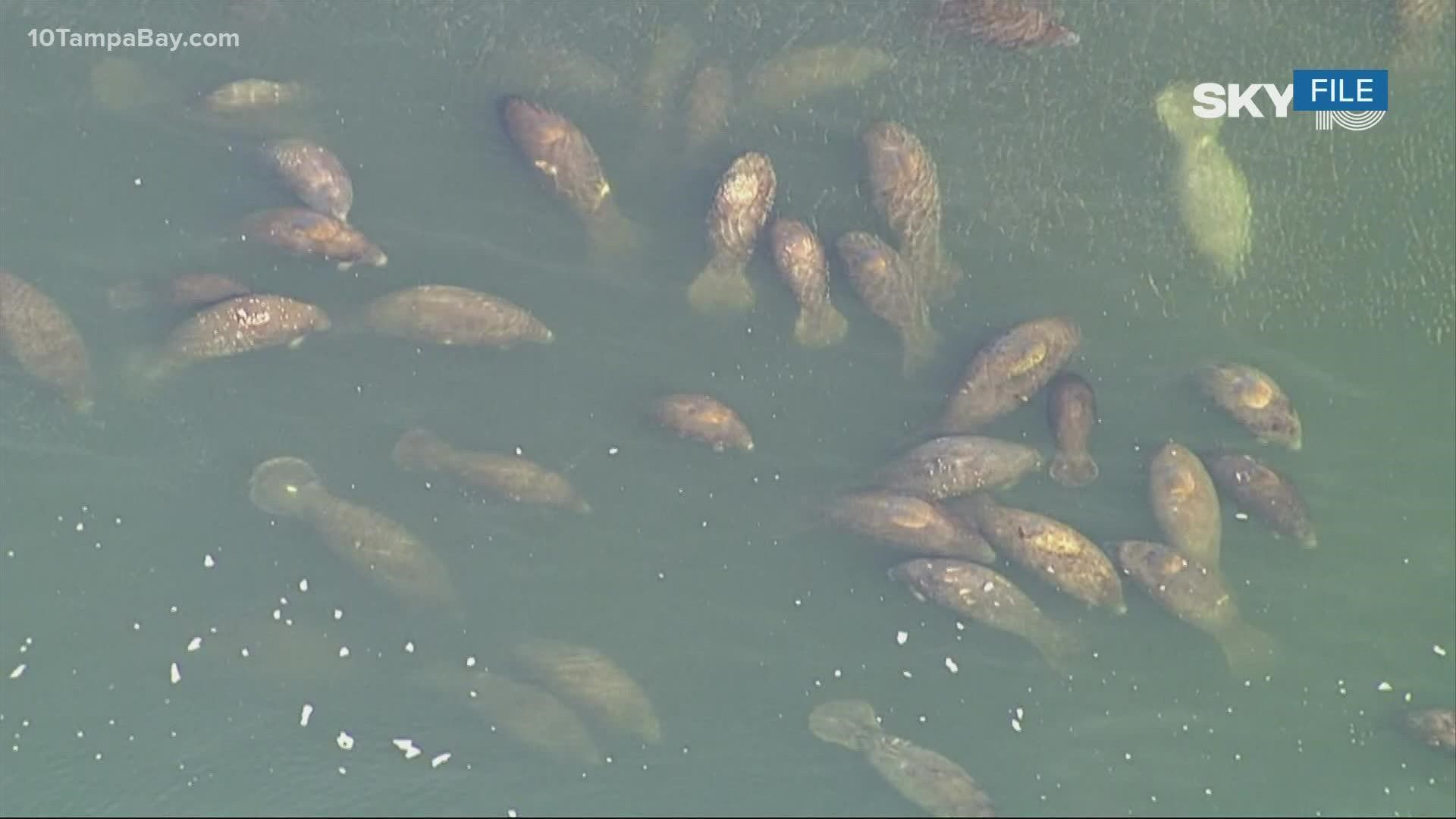CLEARWATER, Fla. — When there’s not enough seagrass to feed all the manatees, what do you do?
One Florida County Commissioner says the answer might just be to kill some.
“Nobody’s addressing the fact that we have too many manatees, eating such a small amount of seagrass,” said Commissioner Curt Smith of Brevard County.
At a commission meeting on March 22, Smith said he wanted to address the elephant in the room. He said that culling the manatee population should be considered to help give sea grass more of a chance to grow — similarly to how it’s done for other animal populations.
“When the bear population exceeds that, what happens? They have a hunt, they cull the herd, they decrease the populations,” Smith said. “I think something has to be considered along those lines.”
But James Powell, the president and executive director at Clearwater Marine Aquarium says, manatees aren’t just like any other animal. They’re a threatened species.
“To cull them, or kill them, is absolutely ridiculous,” he said. “The reason that they’re threatened is that there’s a chance for them to go extinct after a certain amount of time. By culling them, you would be accelerating that.”
Powell says it’s extremely tough around this time of year for the manatees, as more of them gather in the same areas to stay warm. They’re congregating together and eating up the food supply in those places.
But, Powell says, that’s only for short periods of the year, and that the main reason the seagrass is low is because of human impact from things like fertilizer and septic runoff.
“To say we’re going to fix the problem by killing manatees after we’ve destroyed or degraded their home or their habitat is ridiculous,” he said. “We created this problem, they didn’t create this problem. Really what we should be doing, rather than talking about killing them, we should be talking about what we can do to better protect them.”
Just days ago, Clearwater Marine Aquarium announced their “Manatee Survival Plan” to address the Unusual Mortality Event (UME) that manatees are experiencing along Florida’s east coast. The three-phase plan will involve the development of a “new $10 million manatee hospital to treat and rehabilitate manatees for release.”
We reached out to Commissioner Smith for a statement about his comments at the meeting. He replied:
What is needed is an evaluation of what kind of population the environment can maintain. A study of the state’s carrying capacity. That has never been done. Consequently, no one knows if the manatee population has exceeded the ability of the surroundings to support them. It was done for bears, deer, even alligators. I live on the Indian River and see them starving. It is terrible and heart-wrenching. Their population has exceeded what the environment can sustain in my opinion. Bottom line is they are wild animals and not pets. They desperately need our help. They are suffering and dying.
The Florida Fish and Wildlife Conservation Commission tells us manatees are federally protected under the Marine Mammal Protection Act. Representatives from the agency told us several ways that people can help the manatees that include:
- When boating or using personal watercraft, wear polarized sunglasses to help spot manatees.
- Avoid boating in shallow areas to prevent damaging seagrass and to avoid resting and grazing manatees.
- Look for large circles on the water, also known as manatee footprints, indicating the presence of a manatee below.
- Look for manatee snouts sticking up out of the water.
- Follow posted manatee zones while boating.
- Report sightings of injured, distressed, sick or dead manatees to the FWC’s Wildlife Alert Hotline at 888-404-FWCC (3922) or by dialing #FWC or *FWC on a cellphone so trained, expert responders can assist.
- There are many reputable organizations that could use assistance with manatee-related conservation efforts, such as members of the Manatee Rescue & Rehabilitation Partnership and the Fish & Wildlife Foundation of Florida.
- You can also buy a manatee license plate or donate $5 for a manatee decal.
We also reached out to ZooTampa, where representatives sent us a statement saying they are supportive of “uplisting” manatees from a threatened species to an endangered species. They sent a statement that said:
ZooTampa at Lowry Park is a leader in the conservation, protection, and rehabilitation of manatees. As one of only 4 manatee critical care centers in the United States, we are at the forefront of helping with the ongoing crisis facing this species. Manatees are in serious trouble and face multiple threats, including seagrass insufficiency, habitat loss, pollution, climate change, watercraft collisions and declining water quality. Our David A. Straz, Jr. Manatee Critical Care Center has been operating at near capacity for more than a year, providing around-the-clock care and rehabilitation to the most critically ill manatees from across Florida including a record number of orphaned calves.
The current listing of “threatened” provides protections for manatees, as do Florida law and the federal Marine Mammal Protection Act. However, as experts in the field, ZooTampa supports uplisting manatees to “endangered” to keep the needed focus on protecting this species. The loss of more than a thousand manatees last year is deeply concerning and will have serious repercussions for years to come.
We will continue our commitment to be a vital part of conservation and education efforts, ensuring that this remarkable species remains part of Florida’s wild spaces for generations to enjoy.

